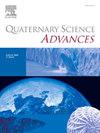Quaternary geomorphology, tectonics and landslide hazards using geospatial technology
IF 2.2
Q2 GEOGRAPHY, PHYSICAL
引用次数: 0
Abstract
This special issue consists of twenty-two articles related to four major themes based on the applications of geospatial technologies which provide an essential insight into Earth's dynamic processes, including mapping of the landforms shaped by glaciations, tectonic activity, and climate shifts. Studies in the Indian Himalayas and Indo-Gangetic Plain highlight the importance of multi-proxy climate records for understanding past climatic variability, such as changes in the Indian Summer Monsoon. Additionally, geospatial technology advances in seismic, landslide, and subsidence monitoring offer valuable data for assessing natural hazards, improving infrastructure resilience, and informing climate change adaptation strategies. Ultimately, these technologies support sustainable development, risk mitigation, and the ability to predict and adapt to future environmental changes.
利用地理空间技术研究第四纪地貌学、构造学和滑坡灾害
这期特刊包括22篇文章,涉及基于地理空间技术应用的四个主要主题,这些主题提供了对地球动态过程的基本见解,包括冰川、构造活动和气候变化形成的地貌图。在印度喜马拉雅和印度恒河平原的研究强调了多代理气候记录对理解过去气候变率的重要性,例如印度夏季风的变化。此外,地震、滑坡和沉陷监测方面的地理空间技术进步为评估自然灾害、提高基础设施恢复能力和为气候变化适应战略提供了有价值的数据。最终,这些技术支持可持续发展、降低风险以及预测和适应未来环境变化的能力。
本文章由计算机程序翻译,如有差异,请以英文原文为准。
求助全文
约1分钟内获得全文
求助全文
来源期刊

Quaternary Science Advances
Earth and Planetary Sciences-Earth-Surface Processes
CiteScore
4.00
自引率
13.30%
发文量
16
审稿时长
61 days
 求助内容:
求助内容: 应助结果提醒方式:
应助结果提醒方式:


